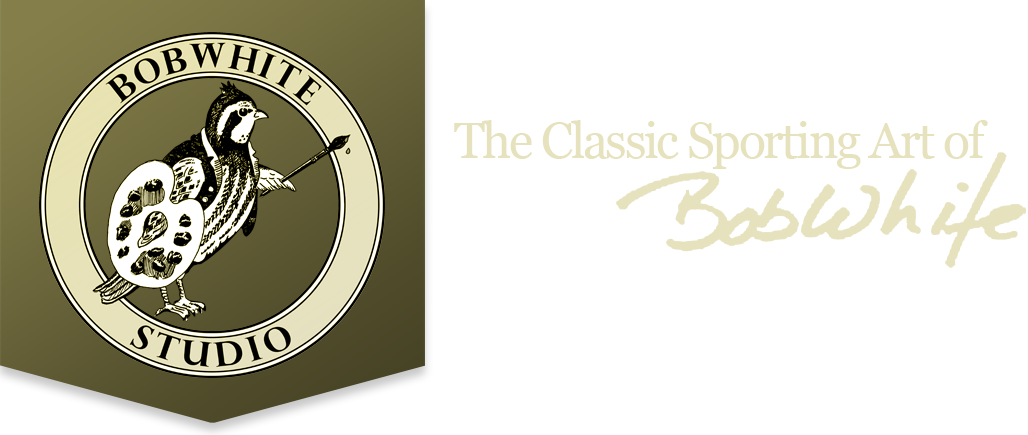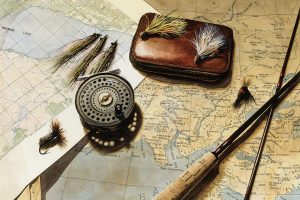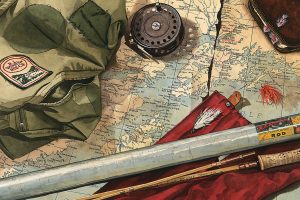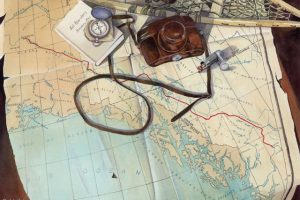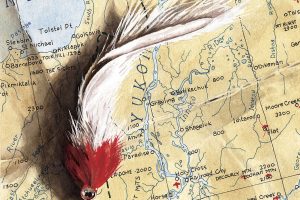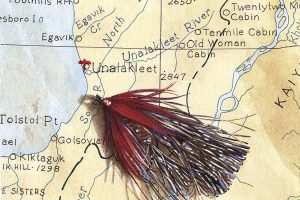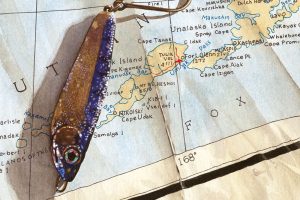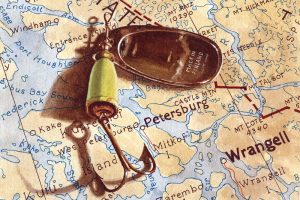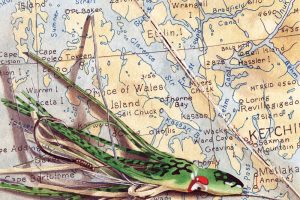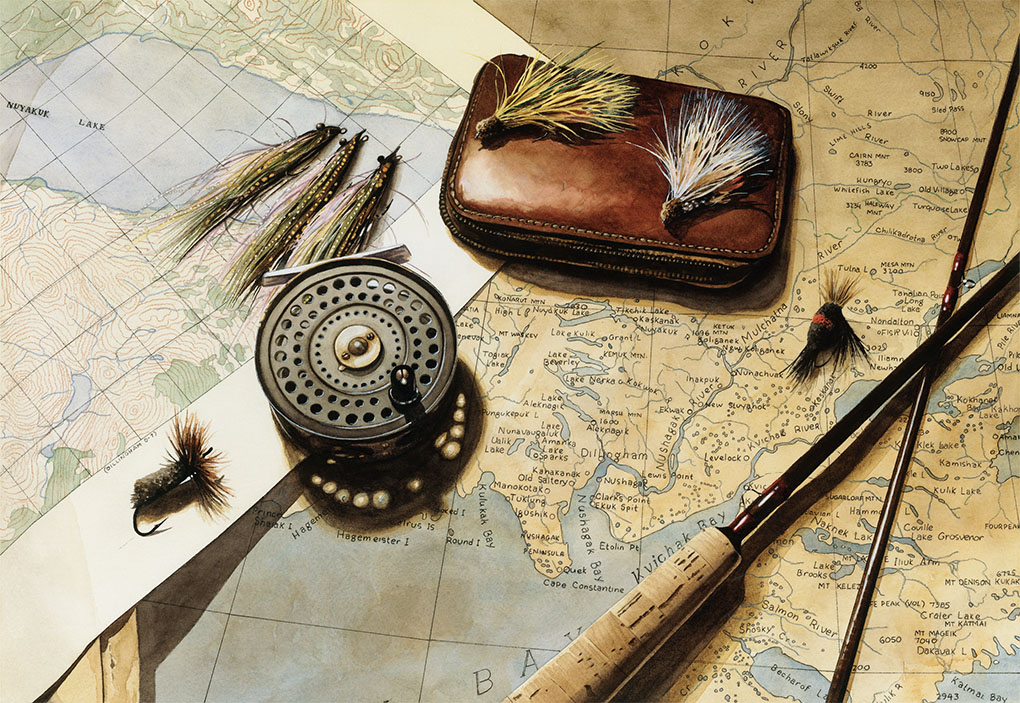
“Maps encourage boldness. They’re like cryptic love letters. They make anything seem possible.”
~ Mark Jenkins
A storm raged inland from the coast of southwest Alaska, and my fishermen and I were miserable, soaked to the bone. The fishing had been good, but no one argued when I suggested that we take a break in the old trapper’s cabin at the head of the river. No matter how dirty or run down the place might be it would provide a welcomed shelter from the late season squall.
“The local trappers use this cabin during the winter,” I said as a warning about what we might find inside.
I was pleasantly surprised; the place was much cleaner than I’d expected. There was even a generous supply of split firewood stacked near the sheet metal stove. The rusty old thing stood near the back wall, and was propped up with river rocks to keep it off the wooden floor. The rain, driven nearly horizontal by gale force winds, drummed steadily on loose windowpanes, and ran down the stovepipe, creating a small puddle on the stovetop.
“First things first,” I said, and smiled at the thought of being warm again. “Let’s build a fire.”
The little cabin warmed quickly, and the windows fogged over from all the steaming waders and rain jackets hung about the place to dry. A cribbage board and a deck of cards (albeit, a few short) was found, and a game was started with broken matchsticks for pegs. Lunch was a pleasant affair, and sandwiches were happily consumed while pegging our game. Any thought of venturing out for some afternoon fishing was quickly dismissed when a stronger than usual gust shook the cabin and rattled loose panes in the sashes.
After lunch my fishermen stretched out in their chairs next to the glowing stove, their feet propped up on some old Blazo boxes. With their wool socks warming next to the fire they dozed fitfully, and I began to take an inventory of the place; if the weather didn’t improve, there was a very real possibility that we’d spend the night.
Cabins in the Alaskan bush are commonly stocked with enough supplies to get by for a few days. Any wayward visitor is welcome to whatever is needed, with the understanding that they replace what’s taken. The uncommon knowledge is that, in addition to what’s found on the shelves, there are often other supplies hidden out of sight. Such a cache might include items to make an extended stay more enjoyable… with, perhaps, a bottle or two of whiskey.
My eyes scanned the rafters and fell upon an old biscuit tin, which upon examination, revealed a small jar of strike-anywhere matches, a second (and full) deck of cards, a dozen tins of kippered herring, a pad of paper with a pencil stub, and one unopened bottle of Lauders Blended Scotch Whiskey. I smiled and carefully replaced all the contents with the comforting knowledge that, if we did have to spend a night or two, we’d be safe, warm, and sufficiently supplied.
I was about to ease myself quietly to the floor when I noticed a long cylinder of rolled cardboard. It looked like an old rod tube, and I thought, perhaps I’d found a vintage bamboo fly rod. Instead, I had found the map.
While my friends snored softly next to the fire, I cleared a dry section of floor, and unrolled two large sheets of thick, browned paper. The edges were stained and ragged; discolored by the droppings of countless generations of mice. When the debris was gently swept aside, two halves of a time worn map were revealed. When placed together, side-by-side, they represented how Alaska looked in the late 1930’s.
I’ve always been enamored by maps, particularly old maps of familiar places. They are, for me, a look backwards into the past.
Half a century before, southwest Alaska was a very different place, and I was fascinated to find so many small and isolated villages that had since disappeared.
It was easy for me to imagine two trappers huddled over the map, examining it by the flickering light of a kerosene lamp, tracing the region’s watersheds, and mountain passes late into the night, looking for likely places to expand their trap line.
The map spoke to me.
It’s against my nature to take something that doesn’t belong to me, and I struggled with that moral dilemma for a moment or two before justifying my pilferage with the excuse that the map would soon be ruined if not preserved. With the decision made, the two halves were gently rolled tight enough to fit inside my rod tube and they returned home with me that autumn.
The map has remained safely protected in my studio ever since. Fifteen years ago it was brought out and used as the backdrop in a still life painting that illustrated John Gierach’s closing column in the 1999 May/June issue of Fly Rod & Reel.
The essay I illustrated for John was about the importance of maps, and the role they play in a fisherman’s life. Little did I know, at the time, how important a role the map would play in mine. Since that first painting “Some Things Old, Some Things New – Maps”, the old map has been the background in no less than eight paintings… and I hope to incorporate it into many more.
